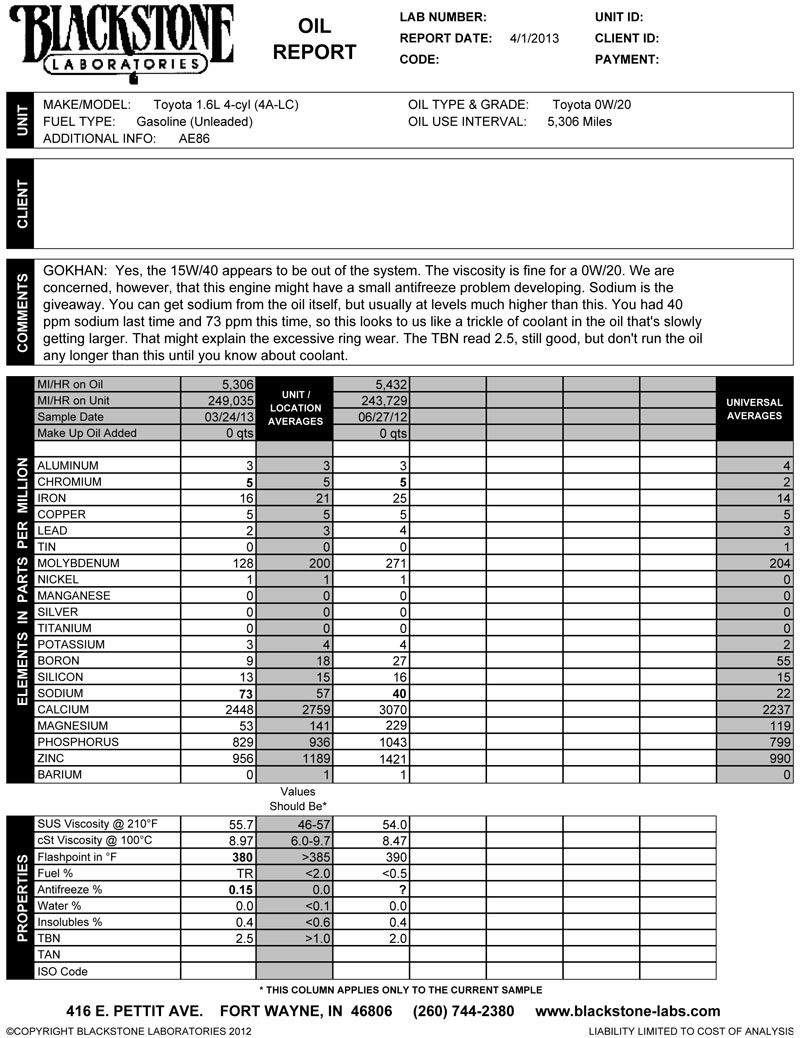I've now got the UOA results on the Toyota (TGMO) 0W-20 SN fully synthetic, made in USA by ExxonMobil.
The results seem to be slightly better than the previous results with the PYB 5W-20 SN dino. Toyota 0W-20 SN is also rather thick, almost as thick as a 5W-30. In fact, I think most 5W-30s shear to smaller viscosity. So, it's thicker than most 5W-30s after they shear. This is a good thing for me, as I want the added protection of slightly higher hot viscosity as well as the super-low cold viscosity of Toyota 0W-20 SN thanks to its ultrahigh, 220ish viscosity index (VI).
The two concerns in the UOA are high chromium and sodium. I've been collecting the hot oil sample in a tin mint-candy box. I am suspecting that chromium might be coming from the plating of the tin box. I was also washing the box with soap and rinsing it many times with water, and there is a possibility that sodium might be coming from the soap-washing. These are speculations though, and I asked these questions to Blackstone as well. Next time, I will try to directly sample the oil in the plastic bottle.
Discussion and comments are welcome.

The results seem to be slightly better than the previous results with the PYB 5W-20 SN dino. Toyota 0W-20 SN is also rather thick, almost as thick as a 5W-30. In fact, I think most 5W-30s shear to smaller viscosity. So, it's thicker than most 5W-30s after they shear. This is a good thing for me, as I want the added protection of slightly higher hot viscosity as well as the super-low cold viscosity of Toyota 0W-20 SN thanks to its ultrahigh, 220ish viscosity index (VI).
The two concerns in the UOA are high chromium and sodium. I've been collecting the hot oil sample in a tin mint-candy box. I am suspecting that chromium might be coming from the plating of the tin box. I was also washing the box with soap and rinsing it many times with water, and there is a possibility that sodium might be coming from the soap-washing. These are speculations though, and I asked these questions to Blackstone as well. Next time, I will try to directly sample the oil in the plastic bottle.
Discussion and comments are welcome.

